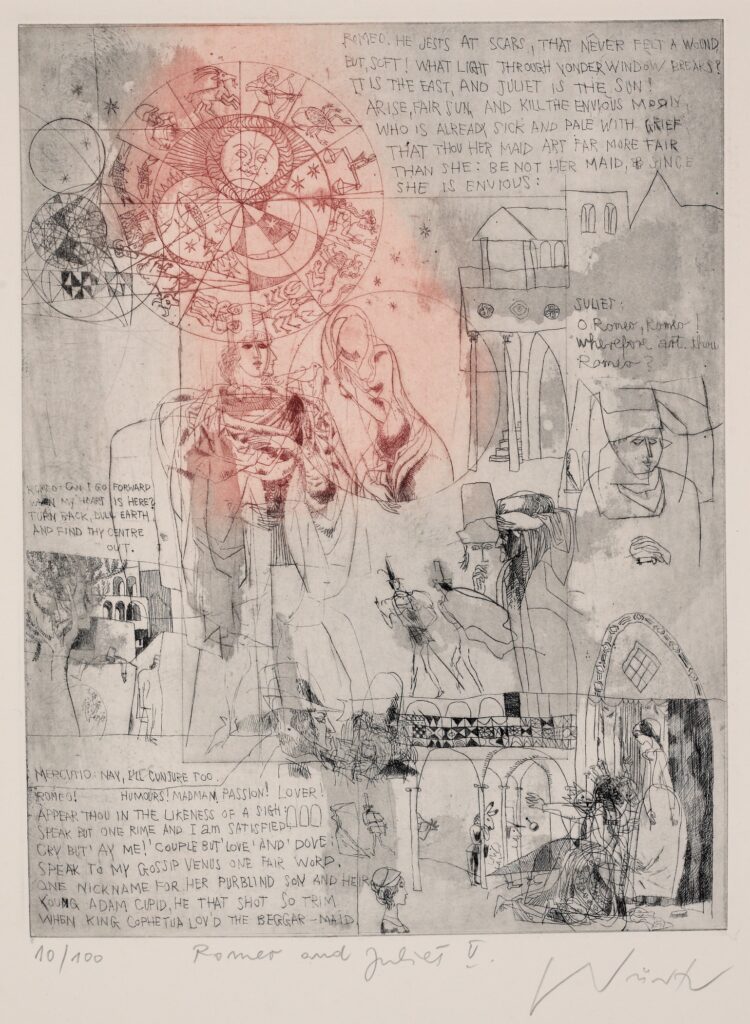Romeo and Juliet Suite (1979), Ádám Würtz
Ádám Würtz’s “Romeo and Juliet Suite” is a series of fourteen color etchings that illustrate significant scenes from Shakespeare’s Romeo and Juliet. The attention drawn to moments in Romeo and Juliet, highlights the humanity of performance art by examining the form through the lens of visual art. Shakespeare’s words are humanized through Wurtz’s artistic capabilities as he emphasizes the moments of performing the human condition that are evident throughout Romeo and Juliet. These illustrations are combined with text from the scenes being represented which forces the audience to reexamine Shakespeare’s words from a more imaginative perspective. Würtz (1927-1994), a Hungarian artist, was greatly influenced by both Surrealism and Primitivism (artoftheprint.com). He employed the use of color etching and aquatint on heavy woven paper to capture the performance of Shapespeare’s Romeo and Juliet. Würtz’s “Romeo and Juliet Suite” series can be found hanging in chronological order along the walls of Rossell Hope Robbins Library and Koller-Collins Center for English Studies.
IV

This etching depicts Act 1 Scene 4 of Shakespeare’s Romeo and Juliet in which Mercutio performs an impassioned recounting of Queen Mab of the fairies as Romeo, Mercutio, and Benvolio, all adorned in masks, attempt to sneak into the Capulet’s feast. Maks are central to Würtz’s interpretation of this scene and represent the theme of performing a false identity.
V

In this portrayal of Act 2 Scene 1 of Romeo and Juliet, Würtz highlights Romeo’s dramatic performance of love by prominently featuring a celestial illustration of the zodiac in the center of his piece. The emphasis surrounding the sun and moon in Würtz’s etching serves to represent Romeo’s use of “light” and “dark” imagery employed in performing his feelings for Juliet.